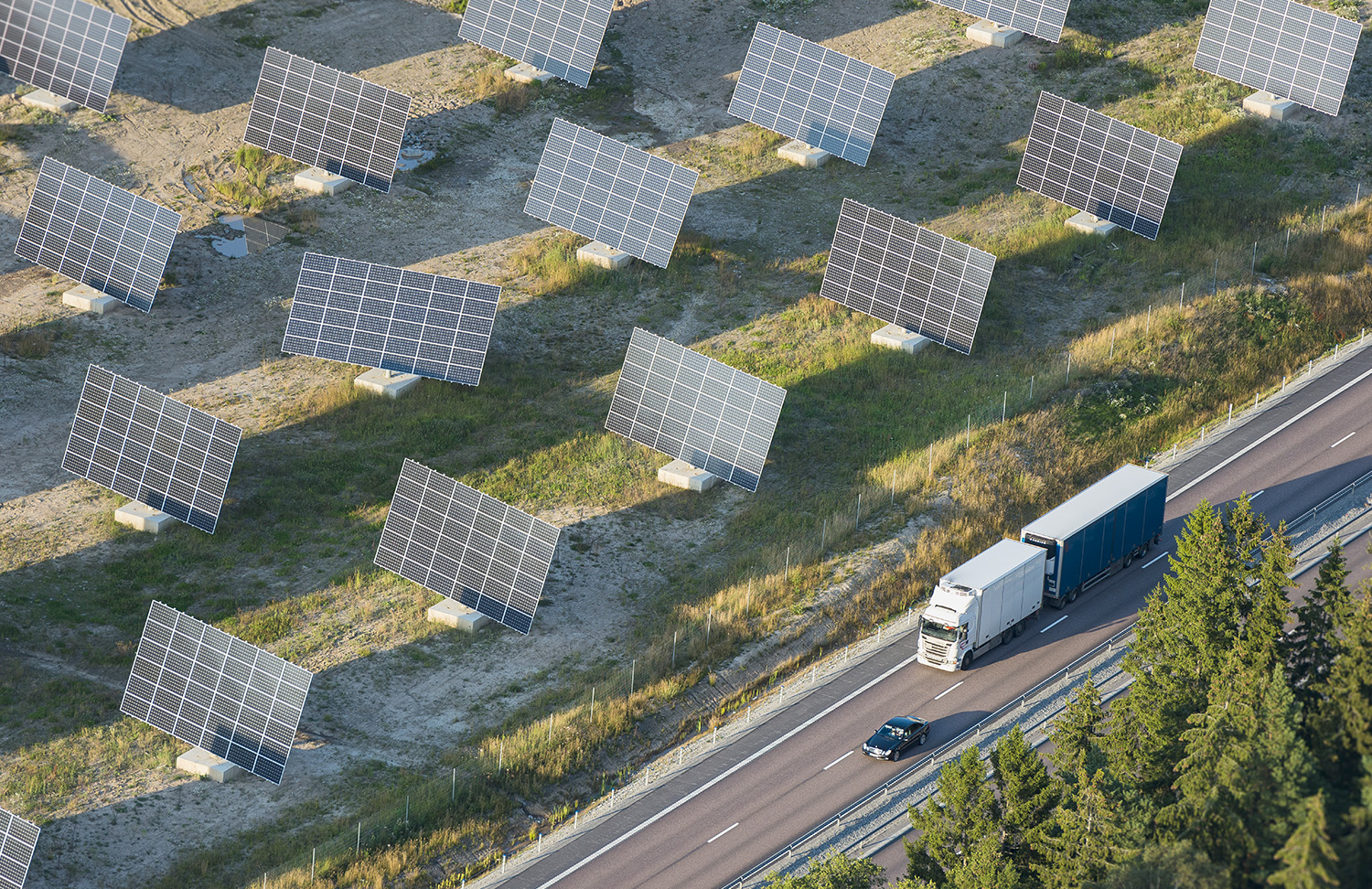
Solar panels in Västerås Sweden.
Photo: Hans Berggren / Scandinav / imagebank.sweden.se
Photo: Hans Berggren / Scandinav / imagebank.sweden.se
1. Introduction
The Council of the EU proposed the Regulation on an emergency intervention to address high energy prices in Europe (hereafter “the CR”) on 14 September 2022. The CR was adopted 6 October 2022 and came into effect from 8 October 2022.
The aim of the CR was to mitigate the effects of high energy prices on energy consumers through exceptional, targeted and time-limited measures. The primary measures to reach this aim were:
- Reduction in electricity demand
- Cap on market revenues for inframarginal technologies in electricity generation
- Solidarity contribution from the fossil fuel sector
The CR also included measures that enable member states to intervene in the price setting of electricity for households and small- and medium-sized enterprises (SMEs).
The CR stipulated the measures that member states were to implement. However, there was some flexibility in how these measures could be implemented. One aim of this study is to describe how the emergency measures outlined in the CR were implemented in the Nordic countries. The second aim is to assess the impact of these measures on the Nordic wholesale power market in the short and long term.
The CR stipulated the measures that member states were to implement. However, there was some flexibility in how these measures could be implemented. One aim of this study is to describe how the emergency measures outlined in the CR were implemented in the Nordic countries. The second aim is to assess the impact of these measures on the Nordic wholesale power market in the short and long term.
The CR has been implemented in Denmark, Finland and Sweden. Iceland and Norway are not members of the EU, and since the CR is not EEA-relevant (and therefore not compulsory), Iceland and Norway have not implemented the CR.
Norway has introduced measures in response to the high electricity prices (see e.g., Høyprisbidrag på vind- og vannkraft - regjeringen.no and Regjeringens strømtiltak - regjeringen.no), but these measures were implemented before the CR.
1.1. Organization of the report
This report is organized as follows. We start by describing the three main measures in the CR in greater detail, after which we describe how the CR has been implemented in each country in Chapter 2. Chapter 2 also summarizes the market agents’ reactions to the measures.
After describing the measures and how they have been implemented, we turn to the impacts of the measures. We examine the impacts of the revenue cap in Chapter 3, the impacts of the measures to reduce electricity demand in Chapter 4 and the impacts of the fossil fuel solidarity contribution in Chapter 5. Our focus is on the short- and long-term impacts on the Nordic electricity market. Short-term impacts refer to production and consumption decisions, while long-term impacts refer to investment decisions. Finally, Chapter 6 concludes.
1.2. Methods
The report is based on the following methods:
- A review of relevant official documents, reports, articles in the media, responses to public consultations in the three countries, etc.
- Interviews with various power market participants, such as representatives of regulators, transmission system operators (TSOs) and producer organizations.
- Data: consumption data has been published by the TSOs and the authorities. However, much of this data was made public just before the finalisation of the report.
1.3. Background: High prices in late summer and early autumn of 2022
The CR was introduced in October 2022 following a couple of months of debate. Power prices had been extraordinarily high for several months, not only during a few peak hours but over a longer period. The price levels were unprecedented, especially for the summer months of June, July and August, and remained high even in September 2022 (see Figure 1.1). This is the background of the CR.
Figure 1.1 shows that power prices dropped considerably in October 2022. Although prices were high in December (slightly below 250 EUR/MWh on average in Denmark, Finland and Southern Sweden), they were much lower than in August. In the first quarter of 2023, the average power price was below 100 EUR/MWh in Finland and Southern Sweden and slightly above 100 EUR/MWh in Denmark. Although this is still considerably higher than the historical price level, it is well below the level of August and September, when the CR was being discussed.
Figure 1.1. Monthly average spot prices (day-ahead), January 2022 – April 2023
Source: Vista Analyse, based on data from ENTSO-E
Source: Vista Analyse, based on data from ENTSO-E